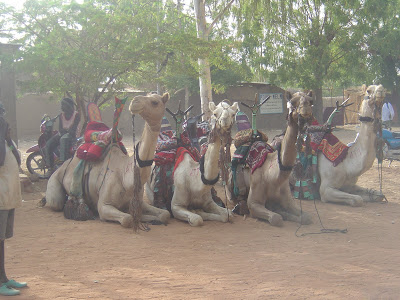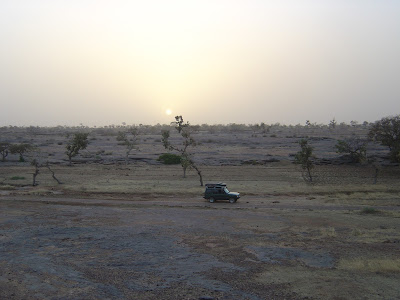We came back to the tar at Doeuntza to find the town in great excitement. Le President de la Republic was in town, along with an entourage of at least 50 Toyota Land Cruisers. Many in the crowd were wearing political t-shirts. The Fula women have tattoos around their mouths, and many men were carrying homemade flint muskets, which did not seem a security risk to the mirror-sunglasses of the presidential guard.
After a night in Douentza, we continued East, passing eroded hills and mesas, and camping in view of one formation near Hombori. This area feels remote, there is almost no traffic and fewer villages. We stopped to give lifts to young men, who stood on the back bumper hanging onto the rack. And when returning we made space inside on the luggage for a young Dogon woman who was going to Bamako for work. She was setting off for the 24 hour journey with no belongings at all.
After a night in Douentza, we continued East, passing eroded hills and mesas, and camping in view of one formation near Hombori. This area feels remote, there is almost no traffic and fewer villages. We stopped to give lifts to young men, who stood on the back bumper hanging onto the rack. And when returning we made space inside on the luggage for a young Dogon woman who was going to Bamako for work. She was setting off for the 24 hour journey with no belongings at all.
From Hombori we made the long journey back to Bamako via the tar road, overnighting in Sevare and Segou. I left Stefanie to get her flight home, and turned back for Sevare to pick up the next co-driver, Con, who is flying in there directly via Marseilles.
We took a hitchhiker back from Hobori to Sevare



















